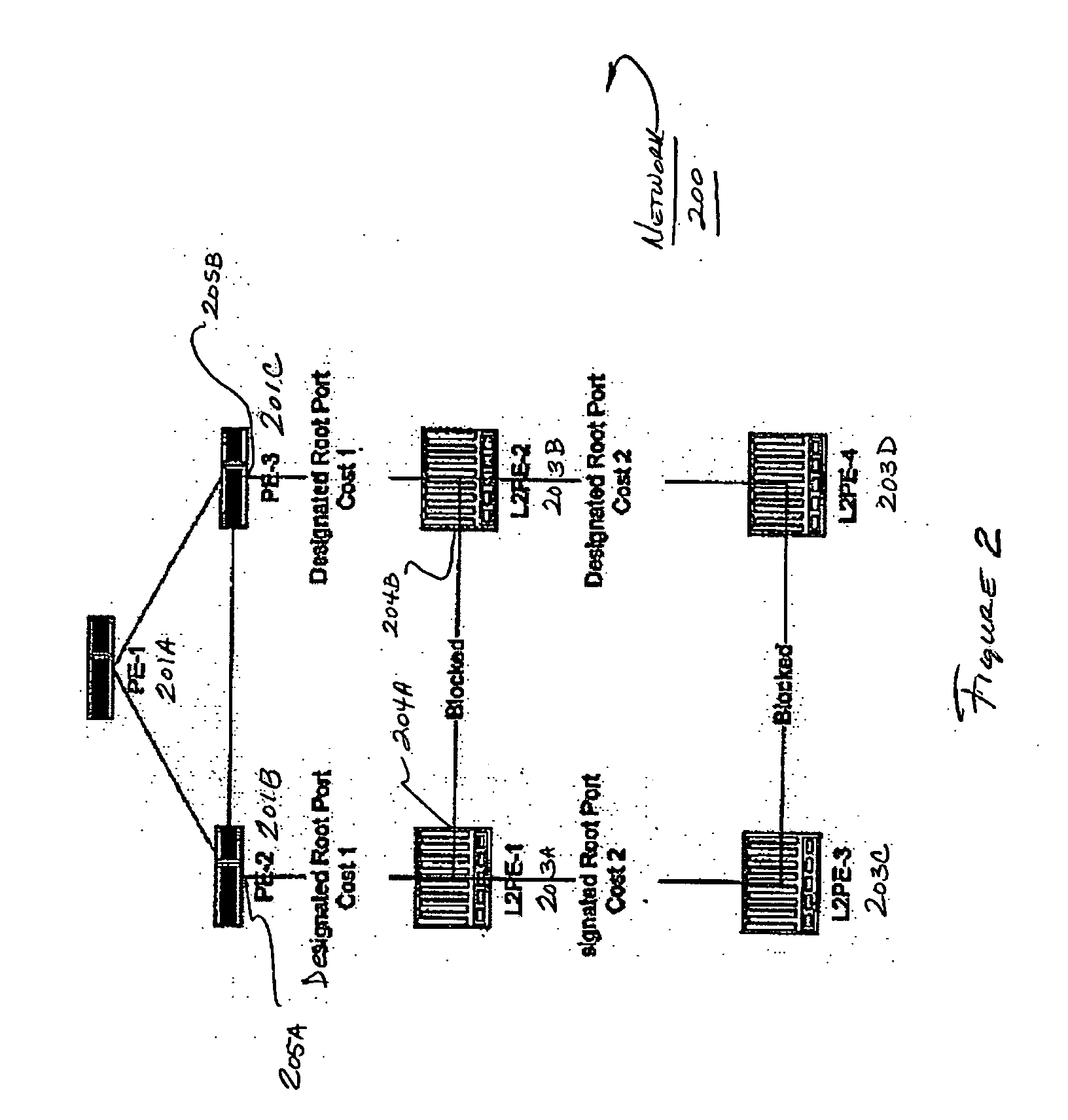Method and apparatus for determining a spanning tree
- Summary
- Abstract
- Description
- Claims
- Application Information
AI Technical Summary
Benefits of technology
Problems solved by technology
Method used
Image
Examples
Embodiment Construction
[0044]FIG. 1 shows a block diagram of a network in which various aspects of the present invention may be practiced. A network 100 includes a number of network forwarding nodes or systems 101A-101C and 102A-102D for communicating data between hosts (not shown) that are coupled to network 100 through one or more network forwarding nodes (e.g. nodes 102A-102D).
[0045] According to one embodiment of the invention, a spanning tree protocol may be adapted to work more optimally in particular network topologies.
[0046] In the topology shown in FIG. 1, there are a number of provider edge (PE) devices that communicate over a core network connecting the nodes. For example, as shown in network 100, a provider edge system PE-1 (Item 101A) is coupled to provider edge devices PE-2 (Item 101B) and PE-3 (Item 101C). For example, PE devices may be coupled by a network implementing Multiprotocol Label Switching (MPLS) that transmits Layer 2 MAC frames between networks.
[0047] One or more Layer 2 prov...
PUM
 Login to View More
Login to View More Abstract
Description
Claims
Application Information
 Login to View More
Login to View More - R&D
- Intellectual Property
- Life Sciences
- Materials
- Tech Scout
- Unparalleled Data Quality
- Higher Quality Content
- 60% Fewer Hallucinations
Browse by: Latest US Patents, China's latest patents, Technical Efficacy Thesaurus, Application Domain, Technology Topic, Popular Technical Reports.
© 2025 PatSnap. All rights reserved.Legal|Privacy policy|Modern Slavery Act Transparency Statement|Sitemap|About US| Contact US: help@patsnap.com



